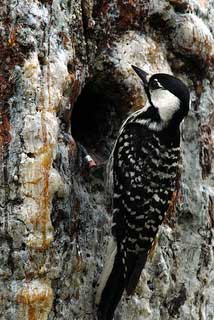
American Bird Conservancy’s current Bird of the Week has been drawing a lot of attention. For the second time, they have declared the bird of the week to be the peep — that marshmallow treat so popular this time of year.
Though the peep has earned the honor once before, in 2011, only the yellow peep was recognized. Now, scientists have determined pink, purple, and blue peeps to be separate species. “There simply isn’t any evidence that these forms interbreed,” says American Bird Conservancy senior scientist, David Wiedenfeld. “While they can often be found roosting in the same box, the fact is that nobody has ever seen an intermediate bird between the color morphs.”
While American Forests currently has no projects that benefit peep habitat directly — in fact, as American Bird Conservancy says, “Although Peeps are heavily consumed, their populations appear to quickly rebound in subsequent years and therefore they are not a species of conservation concern” — we have been pleased in the past to see some of the endangered species we’re working on behalf of awarded the honor of Bird of the Week.

The red-cockaded woodpecker held the honor last year during the week of April 13. Endemic to the continental U.S., this unique bird requires an extremely specialized habitat. Unlike most woodpeckers, it nests in live pines, not in dead trees. The pines must be mature (at least 80 years old) and have red heart disease, making the wood soft enough for the woodpeckers to chip away at, even while the living pine is healthy enough to push out pitch, further protecting the nest. American Forests has been working to restore longleaf pine forests that the woodpecker can call home for decades, including our recent work in the Hal Scott Regional Preserve and Park in Florida.

Another bird we’ve been paying a lot of attention to held the Bird of the Week title in July 2011: the spotted owl. The spotted owl has suffered from a severe loss of its old-growth forest habitat, largely due to logging. American Forests has conducted restoration projects in spotted owl habitat for years, including work in San Bernadino National Forest for the California spotted owl and work in Cibola National Forest on behalf of the Mexican spotted owl. We’ve also advocated for policy to benefit these endangered birds, submitting comments last year to the U.S. Fish and Wildlife Service on the recovery plan for the northern spotted owl.
Not all birds have the healthy populations that the peep is lucky to have, but with your help, we hope we can restore habitat to give more species a fighting chance.